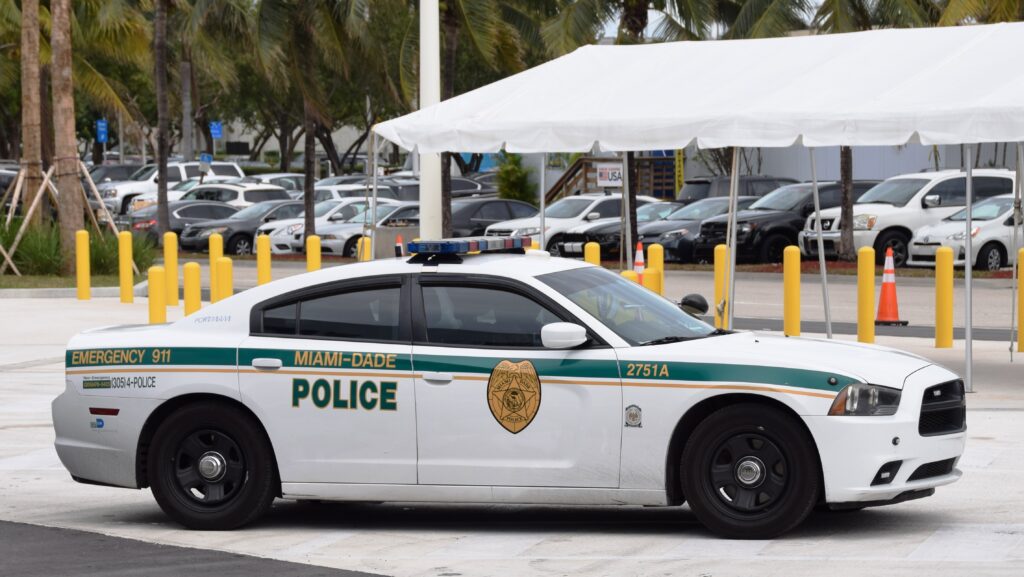OPINION: Miami-Dade’s plan to combat gun violence should be implemented in Hillsborough

The Miami-Dade County Commission passed Miami-Dade County Mayor Daniella Levine Cava’s Peace and Prosperity Plan on June 1 to combat high rates of gun violence in the county. This is a refreshingly holistic approach to curbing gun violence that should be considered by Hillsborough County.
The plan would discourage shootings through quick fixes as well as long-term approaches. The short-term fix takes the form of Operation Summer Heat, which will use $2.5 million to hire dozens of officers who will patrol high-risk areas over 12 weeks.
The initiative includes task forces to shut down illegal businesses, installation of over 200 license plate readers, enhanced social media monitoring and sharing of intelligence between agencies, according to the plan.
The long-term aspects of the plan consist of a “prevention, intervention and reentry” approach, taking into consideration the social and economic disparities that fuel gun violence in underserved communities. The plan will include job creation, counseling and enrichment programs, community revitalization efforts and economic development in underserved areas.
With the gun firing near USF campus in late May and the June 12 shooting in Tampa down I-275, Hillsborough County should take note of the policies Miami-Dade County is implementing and consider a similar investment in its low-income neighborhoods.
Gun violence is an issue that disproportionately plagues disadvantaged low-income communities. Of Miami residents, 25% are in abject poverty, slightly more than the 18% in Hillsborough County, according to the 2020 U.S. Census. This is considerably higher than the 13% national average for metropolitan areas.
Gun homicide has also been heavily linked to areas with poor social mobility, according to a 2019 cross-cultural study from Northeastern University professor Daniel Kim. Roughly 13% of Miami residents over the age of 25 didn’t gain an education past the ninth grade, and 22% failed to graduate high school.
The Peace and Prosperity Plan addresses these social disparities. The plan focuses on creating job opportunities including government, hospitality and construction for at-risk youths, particularly those with criminal records as well as creating business developments in these areas to help low-income families establish themselves and build generational wealth.
Gun violence is the largest risk for youths and young adults with a criminal record, history of poverty, lack of education, mental illness and/or family history of violence and drug abuse, according to the American Psychological Association.
The Peace and Prosperity Plan takes this into particular consideration, allocating nearly $2 million into the Fit2Lead program, which aims to help young kids with criminal records and identified mental disabilities. Fit2Lead provides paid internships, jobs, after-school programs, recreation and workshops to foster long-term academic and behavioral improvements.
The plan will also focus nearly $1 million into other various youth internship/work programs across Miami-Dade County. It intends to create counseling and support opportunities for low-income families as well as intervention programs for at-risk youth including social reintegration programs for adult and juvenile offenders.
Tampa Bay leaders discussed similar issues in May 2020 after the city experienced a 36% uptick in violent crime from the year prior. In the May 20 meeting, they discussed community programs and economic resources for young people as possible solutions for what they deemed to be gang-related violence. Unfortunately, no formal plans nor commissions followed the discussion.
There has been criticism of Miami-Dade’s plan regarding the first phase, Operation Summer Heat, which focuses on heightened police presence in high-risk Miami neighborhoods. This includes increased police overtime, implementation of over 200 license plate readers and additional surveillance cameras at local businesses.
“We’ve got a community-based issue and we have a cultural issue and there’s no way that stepped-up police enforcement is going to do anything but heighten tensions between community and police,” said Executive Director of grassroots mentorship organization Circle of Brotherhood Lyle Muhammad to reporters June 9.
Tampa police have actually increased their use of weapons recently, with little positive impact resulting. Tampa police officers utilized high-impact weapons such as beanbag rounds five and a half times more in 2020 than in 2019 and pointed their weapons at civilians 28% more than the year prior, according to department data. This did little to curb the rise in violence that same year, with 10 shootings and three homicides logged by police from March to May 2020.
Cava’s funds would be better spent on proper training for new recruits to cover the added hours required, rather than spreading veteran police officers thin. A portion of the $340,000 allocated to the Miami-Dade Police Department should be set aside for officer training on situation deescalation and containment to give police officers the interpersonal skills needed to manage high-stress situations.
The plan will not end gun violence overnight. The holistic approach is slow-moving, but the studies behind many of the initiatives are compelling. If Miami drops the additional police presence in already tense neighborhoods, this plan could act as a blueprint for other counties in Florida struggling with similar gun violence rates to pair empathy with enforcement and save lives.







